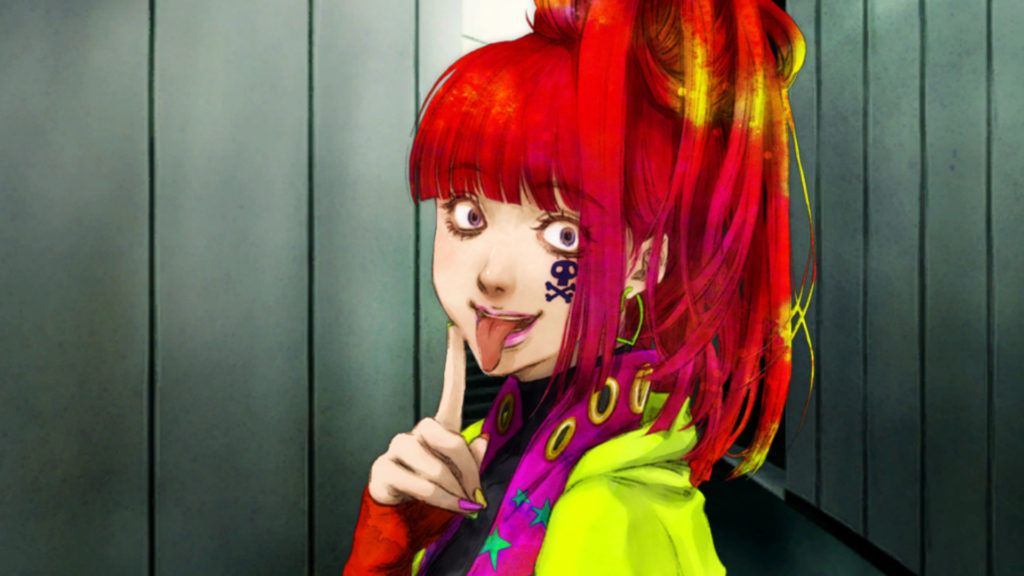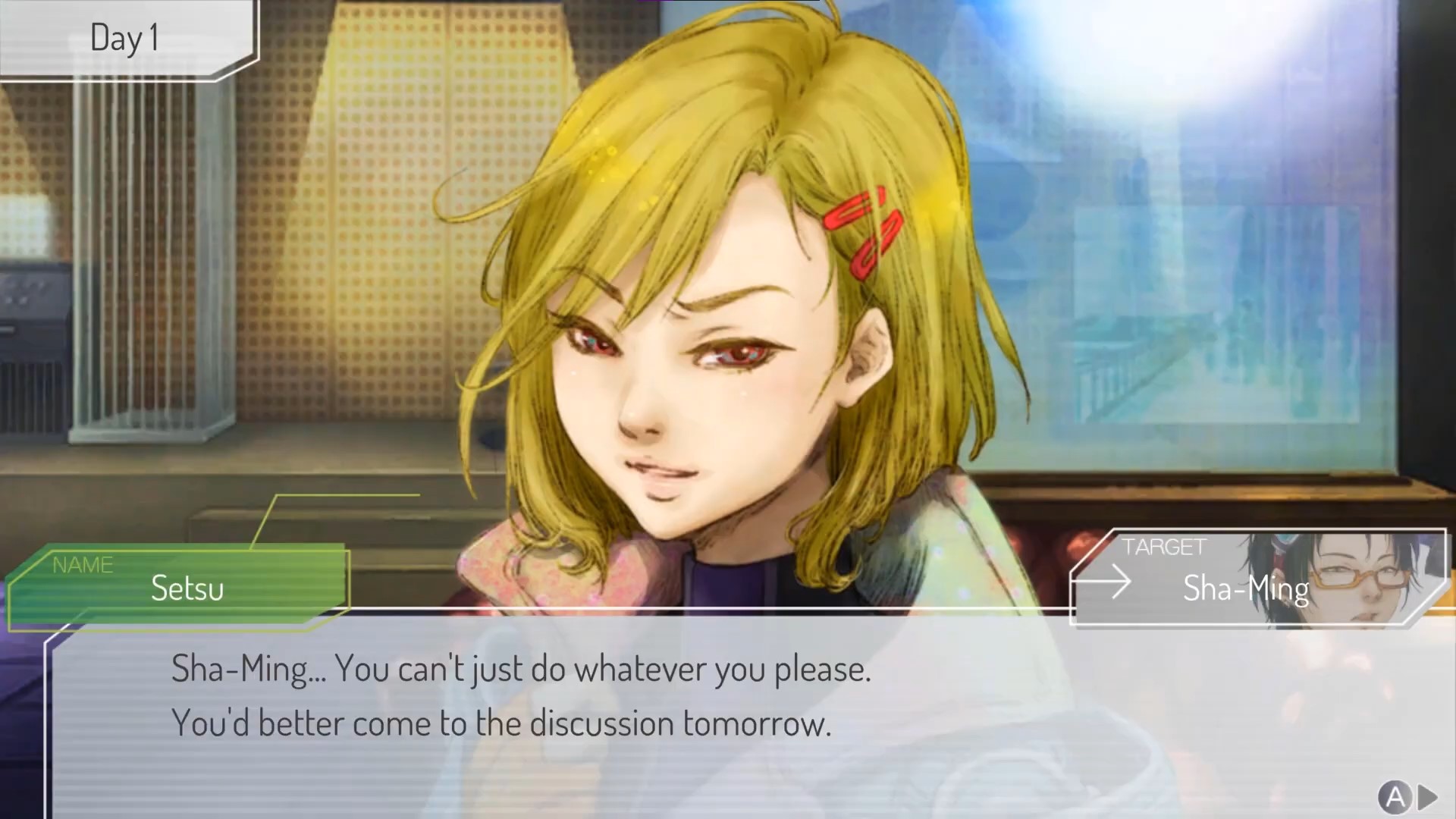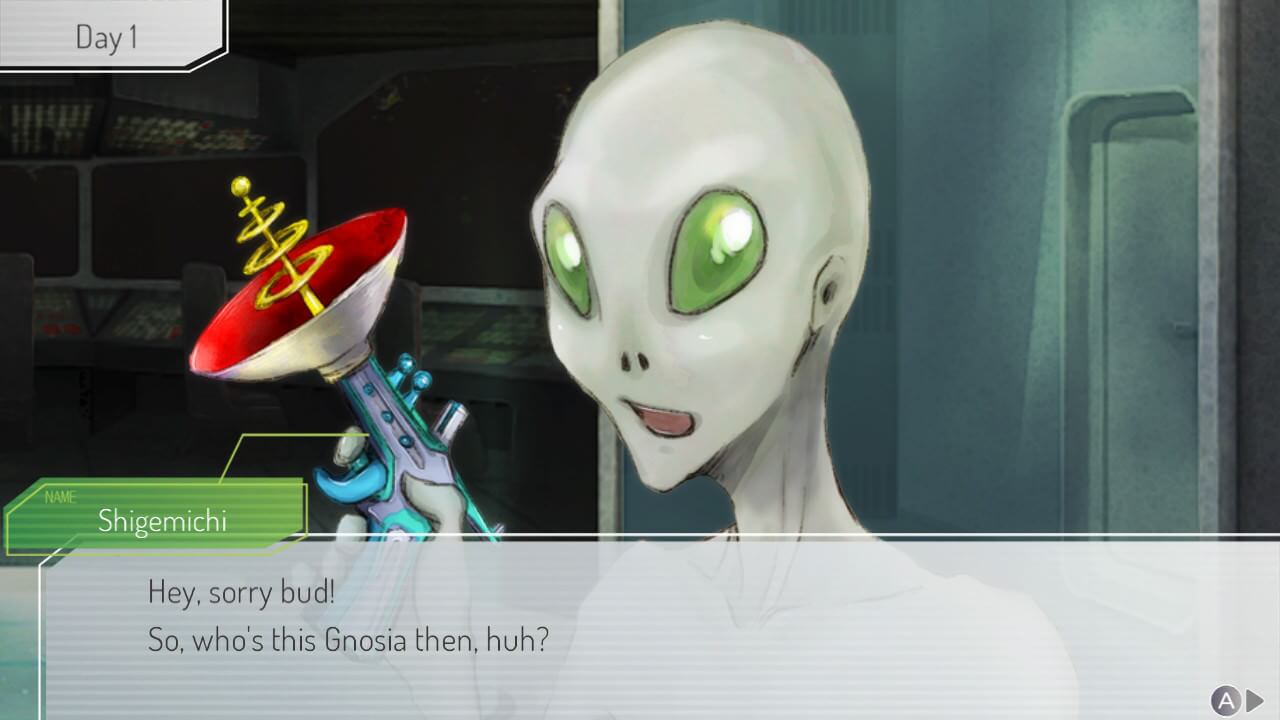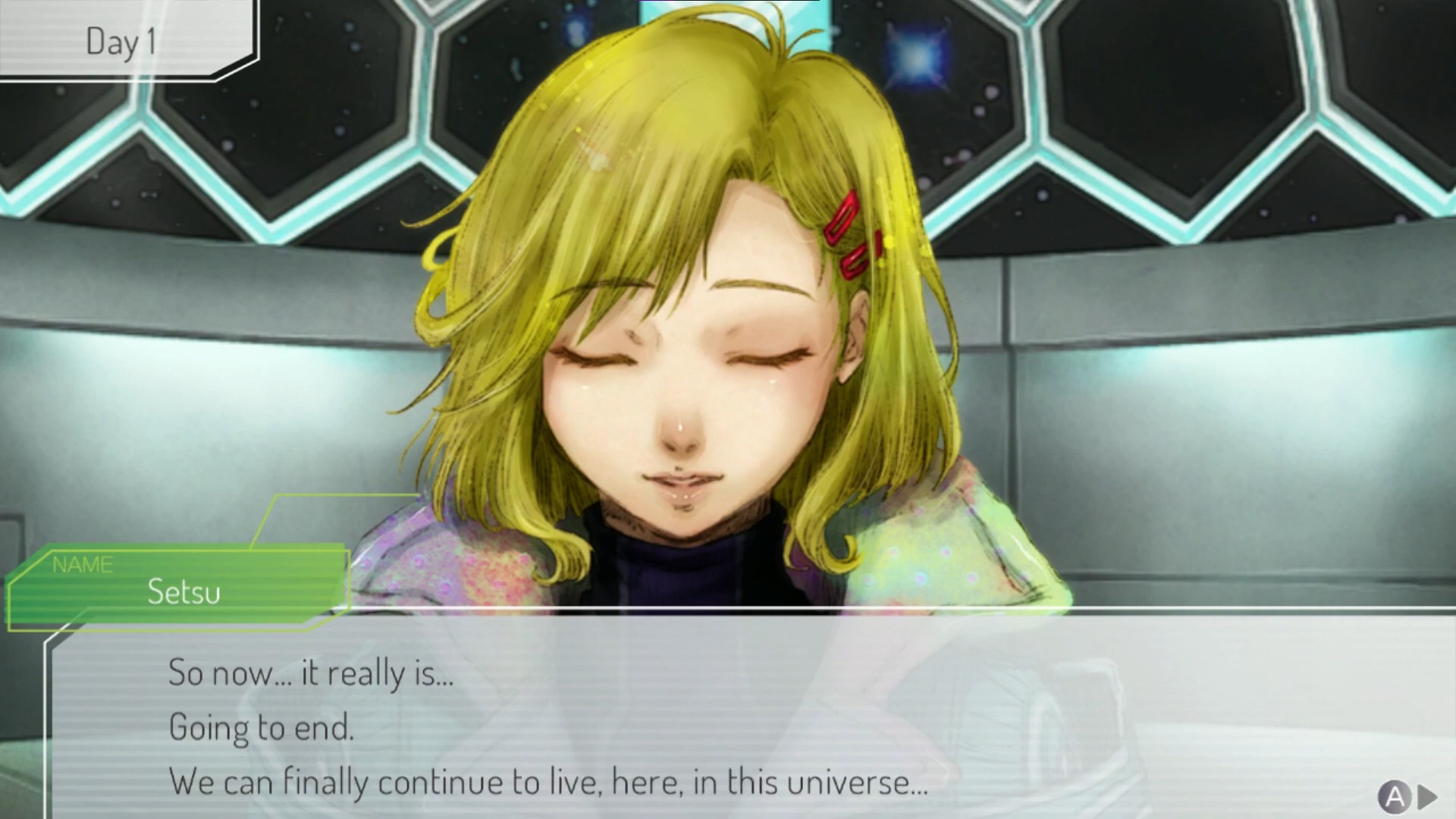
Provided by Petit Depotto
Gnosia: Everyone Lies, Everyone Is Human
Gnosia: Everyone Lies, Everyone Is Human
Lots of characters in GNOSIA aren’t what you would normally call “human”. There’s Otome, the cheerful dolphin in a diving suit filled with water, or Shigemichi, who has the appearance of a classic gray alien. Many others are synthetic life forms instead, robots and clones and what not. But, as we come to realize in the course of the game, they are all people.
Our time with those characters isn’t a peaceful one: the infective Gnosia virus looms ever-present, spreading mistrust within the group. It’s through those extreme circumstances that we begin to accept the characters’ humanity, be they infected or not. As with all people, there is much more to them than the team they belong to.
Human or gnosia, ally or foe, everyone’s humanity is hidden in a story that is as familiar as their appearance is alien. Setsu, a central character in the story, is the key to bring this metaphor home, from the fantastical to the mundane. Theirs is a struggle much closer to the real world, and it’s through them that Gnosia frees its vision of empathy and understanding from the realm of fiction.
Gnosia, a Game of Mafia
Gnosia is a visual novel RPG based around a time loop. Every cycle starts the same way: you wake up to the usual cast of characters around a table, as the ship’s AI declares a state of emergency. Some of the crew has been infected with the virus called “Gnosia”, while the others remain “human”. You proceed to play the classic game of Mafia, or Werewolf, collectively voting on who to eliminate until one of the two teams wins, and the current loop ends.
The gnosia lie, they forge false alliances, they wait for the night to delete their old friends from existence. During their first few loops, the player won’t be sure who to trust. SQ, the pink haired girl that was gnosia on the first round, what role will she have on the second go? Can we really trust Setsu when they won’t even explain why only the two of us keep our memories through the loops?

No matter, we soon realize. The role of gnosia changes with each loop and everyone can become gnosia. Soon, winning a loop won’t be as important. We begin to hunt down every possible conversation, the true objective of the game, until we perfectly understand everyone. We build alliances with gnosia, we hug a crying SQ when we’re infected. Everyone lies, everyone is human.
Speaking of objectives, Setsu is the key to solving this story: our final goal is to break the time loop, and they hold the “Silver Key” that can open a portal away from this endless cycle. In order to work, the Key must first be charged by feeding it information about each character. The way to safety, in Gnosia, is built on understanding and acceptance. And as we’ll see in the end, everyone must be saved, or no one at all.
Characters and Metaphors
Unlike Chipie, one of the 16 characters of Gnosia, no one can get surgery to obtain the body of an animal. But as a trans person I recognize the way he tests the water, asking if you like cats, before awkwardly explaining he’s undergoing “felinification”. I see him waiting patiently for a rant about “messing with your body” to come to an end.
Unlike Remnan, workers don’t spend decades on a single spaceship, hibernating when they can to conserve their age. But he isn’t the only one to escape his life by burying himself in work. Unlike SQ, no child is born to be a vessel for their mother’s consciousness. But many of us know the burden of not being who our family hoped for. Unlike Shigemichi, no one has metallic skin that resembles a gray alien. But we should all find pride in our bodies like he does.

All those characters, like most other in Gnosia, come with personal stories that we can relate to. They carry metaphors that are meaningful and engaging. But none of them feel like real people, except for Setsu. An overall calm and resourceful character, they don’t always come off like that in the game, having to deal with Sha-Ming’s sexist, transphobic attitudes too many times to count. Occasionally, inevitably, the loop will start with Sha-Ming already “eliminated” by Setsu.
Like many of us, Setsu’s fight is always silent, or too loud. They are always composed, so no one will know of their struggle. Then the day comes when Sha-Ming’s mundane abuse piles on too tight. They snap, they fight, they get loud. Every loop where Setsu does this, the group deems them too dangerous to keep around. As fellow time travelers, we know that dealing with Sha-Ming’s provocation was a continuous struggle for Setsu, and that this accident was just the last straw. The others don’t and, seeing only this last outburst and not all they had to endure before, they vote Setsu out of the game.
Change and Hope
Not all is well in the world of Gnosia. Our time traveling abilities helped us see past the confusion caused by the virus, but that can’t be said for everyone else. When we talked about Chipie, the cat-person, we saw how he had to endure a bigoted monologue in silence. This confused speech about “messing with the body you got from your parents” comes from the otherwise cheerful Shigemichi.
But everyone’s story in Gnosia is built on change, so we know they can change again. Shigemichi might act disrespectfully towards Chipie, but he too knows the joy of taking hold of his body: after all, he himself has the appearance of a classic gray alien. It’s a question of time before, in the games’ ending, Shigemichi and Chipie can share a few words in peace.
In the same boat as Shigemichi and Chipie we find Stella, the Ship’s AI. Given a body just to better interact with crew and passengers, she soon finds herself developing a personality. Calm and caring, she adorns the ship with flowers. She laughs when, in the finale, Setsu refers to the ship with her name. Along with her there are many others, too many to count. They all just want to live their better life. They want peace.

Every human can be gnosia, and since gnosia only affects people, everyone is human. Knowing this, we decide that no one needs to play the enemy’s part. The entire game, building towards complete understanding of those characters, ends on a radical act of empathy: we set the next loop to 15 humans, zero gnosia. The game has run its course, there’s no need to lie anymore.
Though helped by supernatural means, peace is shown as the natural result of a trusting and understanding community. But peace isn’t always enough. In the regular ending, Setsu decides to disappear to save everyone else, seeing their sacrifice as essential to preserve harmony in this unstable world. But they are wrong.
A World for All of Us
Everyone lies, everyone is human, and everyone gets to live. We talk, we learn, and we fight, even if it takes eons, until everyone understands. We can find a place where Setsu’s sacrifice isn’t necessary, one that doesn’t need them to disappear to find peace. If that world doesn’t exist, then we have no choice but to build it ourselves.
In the regular ending, Setsu uses our activated “Silver Key” to create a passage to a different universe. They bring the cause of the time loop with them, to that new world. This is their sacrifice. Opening a new save file, creating a new world, we find them. We bring them the last knowledge needed to complete their Key, “[player] carried over their consciousness from another dimension”.

This new world is just like the last, but with one major difference: we carried over our consciousness, and Setsu knows it. They know that we understand, they know why we came back. With both our keys full and the knowledge of how this first loop will go, we free SQ from the usurper of her body, the gnosia. The rest will come with time. That’s something else new to this world: we finally have time.
But the time loop has stopped, the game ends here. We don’t get to see how this story goes on. “We can continue living here”, says Setsu, before disappearing in the end credits. They thank Us, the player, as the new main menu fades in. Each character is painted happily walking together except for Setsu, looking distracted; looking at us.
Will we be true to our promise, of building a World for all of us, now that we left Gnosia to its happy ending? What would Chipie do in our world? How would SQ be treated? Would we treat Setsu fairly? Are we ready to deal with the Sha-Ming of our world, and to control the Manan within ourselves?
We don’t have sci-fi games of Werewolf to help us, nor the convenience of an infinite time loop. We only have time, and not too much of it, but we can still try. We have no choice but to try, no matter the odds. Setsu’s eyes from the final scene come to mind, and they seem to trust us. That trust will make it all worth it.
If you like what we do here at Uppercut, consider supporting us on Patreon. Supporters at the $5+ tiers get access to written content early.






1 thought on “Gnosia: Everyone Lies, Everyone Is Human”